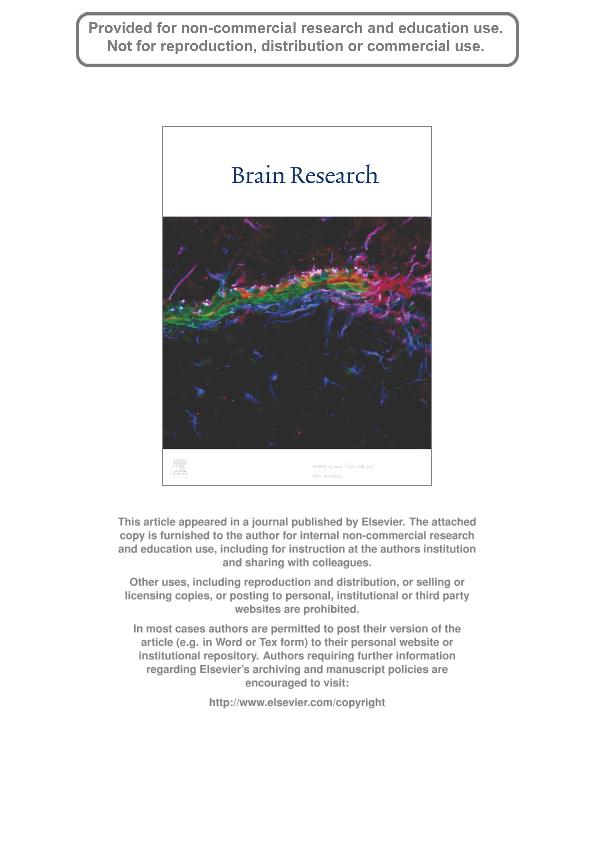Artículo
Endothelinergic cells in the subependymal region of mice
Castañeda, Mauricio Martin ; Cubilla, Marisa Angélica
; Cubilla, Marisa Angélica ; López Vicchi, Martín Miguel; Suburo, Angela Maria
; López Vicchi, Martín Miguel; Suburo, Angela Maria
 ; Cubilla, Marisa Angélica
; Cubilla, Marisa Angélica ; López Vicchi, Martín Miguel; Suburo, Angela Maria
; López Vicchi, Martín Miguel; Suburo, Angela Maria
Fecha de publicación:
03/2010
Editorial:
Elsevier Science
Revista:
Brain Research
ISSN:
0006-8993
Idioma:
Inglés
Tipo de recurso:
Artículo publicado
Clasificación temática:
Resumen
Endothelin (ET) is a small peptide that activates astrocyte proliferation, regulates proliferation and migration of embryonic neural precursor cells and stimulates glioblastoma growth. We found that in mouse brain, ET and its receptor B (ETRB) were highly expressed in the subependymal zone (SEZ), an adult neurogenic niche. Cells with ET immunoreactivity (ET+ cells) selectively appeared along the lateral and dorsal walls of the lateral ventricle. They also appeared in the cingular region of the corpus callosum. Subependymal ET+ cells also displayed prominin (PRO), glial fibrillary acidic protein (GFAP) and ETRB immunoreactivities. ET+ processes traversed the ependymal epithelium and approached the ventricular lumen. Ependymal cells only showed ETRB-ir. A small but consistent number of ET+ cells displayed proliferation markers: 5-bromo-2′-deoxyuridine (BrdU) incorporation, and minichromosome maintenance protein 2 (Mcm2). Cortical injury and G-CSF increased subependymal endothelinergic cells and their proliferation markers. Our findings suggest that ET and ETRB might be associated with regulation of adult neural stem cells and their migration through neurogenic and gliogenic pathways.
Archivos asociados
Licencia
Identificadores
Colecciones
Articulos(SEDE CENTRAL)
Articulos de SEDE CENTRAL
Articulos de SEDE CENTRAL
Citación
Castañeda, Mauricio Martin; Cubilla, Marisa Angélica; López Vicchi, Martín Miguel; Suburo, Angela Maria; Endothelinergic cells in the subependymal region of mice; Elsevier Science; Brain Research; 1321; 3-2010; 20-30
Compartir
Altmétricas



